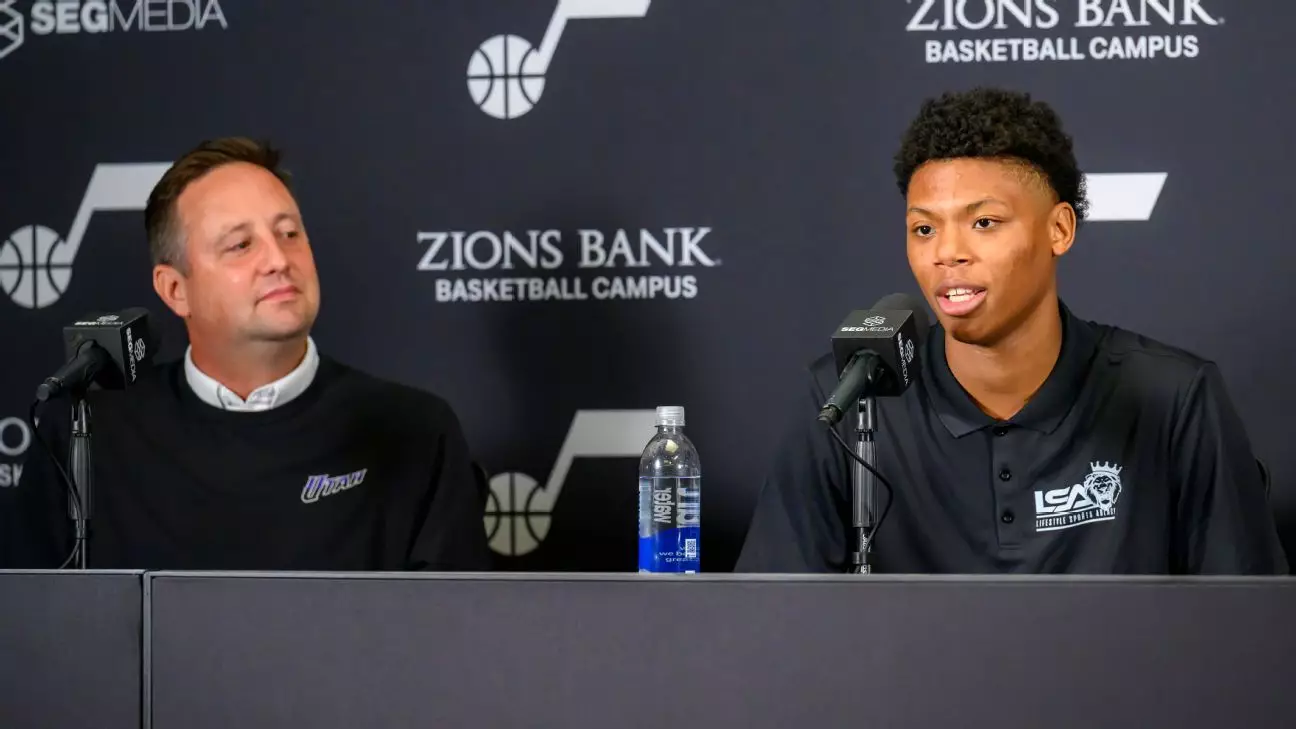Ace Bailey’s entrance into the NBA as the fifth overall pick may seem like a straightforward success story on the surface. Yet, beneath the surface lies a subtle but important critique of the rigid, often suffocating rituals of the NBA draft process itself. Bailey, who notably refused to engage in multiple pre-draft workouts—cancelling one with the Philadelphia 76ers and skipping invitations from his eventual team, the Utah Jazz, among others—chose a path that most traditionalists would view as defiant or even naïve. However, instead of punishing him, the Jazz gambled on his talent and potential. This decision exposes a disconnect between conventional scouting dogma and the evolving demands and autonomy of young athletes in today’s sports landscape.
Bailey’s refusal to participate in workouts that would typically be mandatory for prospects invited to demonstrate their skills underscores a growing tension. On one hand, teams seek intimacy and reassurance in face-to-face evaluations; on the other, players like Bailey assert their agency by selectively revealing themselves on their own terms. The fact that Bailey still landed as a top lottery pick challenges entrenched assumptions about how talent must be vetted and controlled, and it raises a powerful question—why should a draft prospect sacrifice personal dignity for outdated rituals that, frankly, don’t always align with their best interests?
Misunderstood Potential Versus Scouting Orthodoxy
Bailey’s slide from a projected top-three pick to number five is emblematic of a broader paralysis in scouting. Despite a versatile offensive skill set honed at Rutgers—with a knack for stretching defenses, scoring inside the paint, and rebounding—he was scrutinized for perceived shortcomings like scoring efficiency, ballhandling, and maturity. Such criticisms, while valid in a narrow sense, risk reducing a vibrant, multi-dimensional player to a checklist of imperfections. In a draft culture that often treats young talent like commodities to be fully de-risked before investment, players like Bailey are penalized for their developmental imperfections rather than celebrated for their potential.
Utah’s choice to prioritize his upside and character over a sanitized profile signals a refreshing gamble on player development over instant gratification. It also subtly challenges the cautious, risk-averse mentality that pervades many front offices, illustrating that judgment and human elements can—and should—factor into these high-stakes decisions. Beyond the box scores, Bailey embodies a player willing to trust his process and embrace his imperfections, reminding us all that elite athletes are discovering that failure is part of growth and that no career path is linear or perfect.
The Jazz’s Bold Strategy: Character and Versatility Over Conventional Metrics
Jazz president Austin Ainge’s confidence in Bailey and his fellow draftees is a noteworthy example of how modern front offices might recalibrate what they value. By emphasizing “high potential and high character,” Utah shuns the one-dimensional focus on numerical data and pure athletic projection that dominates much of scouting’s attention. The belief that these rookies “can play on both ends” and “put the ball in the hole” is shorthand for a preference toward adaptable, effort-driven players who can evolve rather than being instant stars.
This strategy hinges on a patient, developmental mindset that is rare but desperately needed in the professional sports world, where young players often face immense pressure to justify their draft positions immediately. It is a tacit acknowledgement that multidimensionality and basketball IQ trump raw athleticism alone. However, it also invites criticism: by investing so heavily in character and potential, the Jazz are accepting a significant risk, and the failure to produce tangible results could be costly. But in a league where franchise-building often feels like a short-sighted sprint, Utah’s approach suggests a more mature and sustainable philosophy.
A Lesson in Humility and Growth for Fans and Franchises Alike
Bailey’s humble acknowledgment that “everybody makes mistakes” and that the journey is imperfect is a refreshing dose of realism in a world obsessed with perfection and instant success. Having been criticized for his draft-day approach, Bailey’s genuine enthusiasm for joining Utah and his trust in his work ethic reveal an emotional intelligence often missing in young athletes. His attitude embodies a necessary cultural shift: the realization that safe, formulaic career trajectories are a myth, and embracing uncertainty is an integral part of both athletic and personal growth.
This perspective should extend beyond just Bailey to how fans, media, and teams interact with prospects and young players. The obsession with flawless efficiency or polished public relations campaigns ignores the messy human element integral to sports. Bailey’s story, then, serves not only as a statement on the draft process but as a call for a more compassionate and nuanced understanding of what it means to develop as a professional athlete today. His journey is less about immediate validation and more about resilience, adaptability, and the courage to move forward without guarantees—traits that, if nurtured broadly, could enrich the entire culture of professional basketball.

Leave a Reply